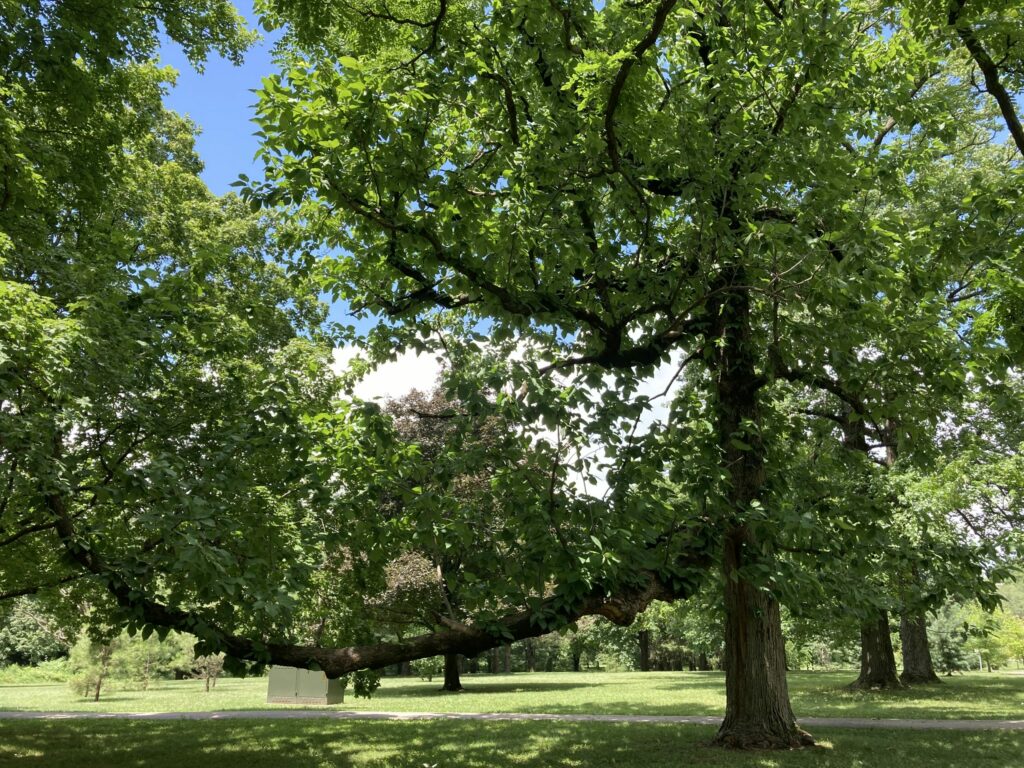By Mark Halpin, Forestry Manager
Magnolia acuminata, cucumber magnolia, our only Missouri native magnolia, is seldom even recognized as a member of that illustrious genus that graces springtime and early summer with its extravagant flower displays. Star, saucer, southern, sweetbay and a host of hybrids and cultivars are ubiquitous in our landscapes and seldom unwelcome, but the cucumber magnolia, or cucumbertree as it is sometimes known, is both uncommon and underappreciated. It is often hybridized with more ornamental magnolias to produce cultivars such as the popular yellow-flowered ‘Butterflies’. As a straight species however, it lacks the two traits people love the magnolias for: compact, graceful habit and showy flowers.
This is a large tree, often exceeding 70 feet in both height and spread. The flowers are pale yellow-green, opening usually in May – not unattractive, but so similar in color to the leaf that they can be hard to spot. In many cases, even attempting to view them will require a pair of binoculars as mature specimens tend to lack low branches and so the only flowers are high in the canopy. Once pollinated they form short green seed pods that do closely resemble unripe cucumbers. The unopened flower buds were a popular whiskey additive in the early days of our nation, the resulting concoction being recommended as a medicine for a host of ailments. (Its use was so general that its chief medical virtue was likely just alcohol, the buds being little more than a flavoring agent to soften the rough frontier booze.)
Although not an important lumber species, it is sometimes harvested and its wood considered interchangeable with the more common and closely related Liriodendron tulipifera, tuliptree or yellow/tulip poplar, also a member of the Magnolia family. Like the tuliptree, cucumber magnolia is at its best as a shade tree. Although not nearly as fast growing (tuliptree’s growth rate is exceptionally rapid) it is aesthetically superior in form, with enormous, contorted and spreading branches developing in maturity. Tuliptree can be somewhat bland in habit – the trunk is usually perfectly straight, with small lateral branches, like a textbook illustration of “good shade tree” – but cucumber magnolia has true character. Exceptional specimens can cause a tree lover to stare up into their canopies long enough to develop some serious neck pain, so if you come across a good one it may be best to just lie down to view it before this happens. Or if you do develop that neck pain, pick some unopened flower buds, add them to whiskey and cure yourself in the manner of our ancestors.
(The former “state champion” as recognized by the Missouri Conservation Department resides at the eastern edge of Forest Park, just a few hundred feet west of Kingshighway and south of West Pine Drive, and is one of a grove of many gorgeous specimens of cucumber magnolia in this little cut-off woodland. Anyone wishing to familiarize themselves with the charms of this species should pay a visit and see this unusual magnolia at its very best).




